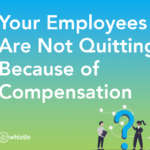Pizza Parties Are Not the Answer to Your Employee Retention Problems
But micropayments might be
We’ve all been to those mandatory office parties or the quarterly pizza party for crushing your goals, and we all kept one eye on the clock the entire time.
Forced fun, or mandatory fun, is rarely fun, especially at work. Neither are meaningless, impersonal tokens of appreciation. None of these are efficient in boosting satisfaction, motivation or retention either.
Severance, a recent television show on AppleTV+, depicts almost a caricature of stereotypical office behaviors including forced dance parties and a myriad of food-themed bars and carts when an employee goes above and beyond. Of course, Severance told a story of a much darker facade, but the same, jaded sentiment can be found in offices and work cultures across the country.
The truth is, most employers don’t know what specific employees enjoy or value and executives or HR personnel rarely guess it right. So, skip the gift cards, pizza parties and focus on what moves the needle on employee engagement and retention.
Reward Employees More Frequently with Smaller Rewards
Frequent, smaller rewards are more impactful than less frequent large rewards. More importantly, when rewards are tied to a specific task and is granted immediately, the impact goes even deeper.
The employees that took part in the aforementioned research study maintained the same level of engagement and interest in their work when there were no more rewards. Talk about sustainable solutions.
But what should you be using as rewards?
Cash is King
Even in our digital world, cold hard cash (that includes digital money) is the most favored employee incentive. Companies that offer spot bonuses as part of their incentive program have happier, more engaged and productive teams.
With rising inflation, a little help with gas money has more impact than another slice of pizza. Cash gives employees options so that funds can be used in a way that is most impactful for each person.
Gift Cards are Out
How many unused gift cards do you have stuffed away in a junk drawer somewhere? Or maybe you just started a diet, and your job rewards you with a gift card to Outback Steakhouse. Unfortunately, we’ve heard stories of vegetarian employees being gifted The Honey Baked Ham Company gift cards (*awkward*).
When companies invest a large chunk of their rewards budget on gift cards, it’s difficult, if not impossible, to make them feel personal.
The truth of the matter is, even if gift cards are an easy, predictable way to spend a rewards budget, they don’t offer that much return in terms of employee engagement or productivity.
Discover the Rewarding World of Whistle Payments
At Whistle, we believe in the power of your people—and rewarding them well! Whistle Payments was created specifically to support improving employee retention, engagement and productivity. While at the same time reducing the administrative headaches and costs that comes with gift cards and reward catalogs.
And because Whistle Payments is instant, the value of the incentive has a much greater impact on creating the behaviors that make your team more successful. Everything from spot-bonuses to travel stipends, culture budgets to learning incentives can all be easily managed with Whistle.
Oh yeah, and it’s free.
Give us a try (signup required), or if you need more information, Contact Us today!

Richard Nava is a Technical Client Success Manager at Whistle responsible for helping clients create and manage programs on the Whistle platform. Nava’s background spans software engineering, client management and game design giving him unique insights into how technology intersects with great client experiences.
Whistle helps companies make better investments in people to improve retention, productivity, and profitability. The Whistle platform integrates patent pending payment and microlearning tools with AI and business intelligence so companies can investment in, measure and continually improve the value of their people programs.










